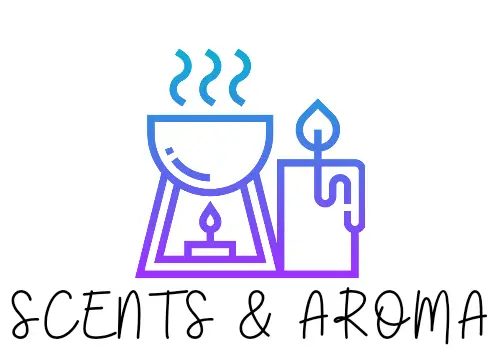Staring at a lit candle is not bad for your eyes because a candle does not emit enough light to hurt the eyes. In fact, candlelight is used for candle meditation, called trataka, and rather than hurt the eyes, staring at candlelight for long has been proven to be beneficial to the mental and emotional health of individuals.
In this article, we will look at the following topics:
- Can you stare at a candle without hurting your eyes?
- Is it safe to keep looking at candlelight?
- How long is it safe to stare at a candle?
- Is staring at a candle safe for everyone?
- Why is staring at a candle different from staring at the sun?

Can You Stare at a Candle without Hurting Your Eyes?
Candles are used for so many reasons today, and you might be worried that staring at a candle will hurt your eyes. Staring at a candle does not hurt the eyes. Candles produce very little light, and it will take more than 40 candles to match a bulb with 40-watt brightness. A candle’s brightness is about 13 lumens, which is less than 1 watt. If you are interested in seeing if candlelight is cheaper than electrical light check out this article.
The low intensity of candlelight cannot damage eyesight even when reading with it. Staring at a candle is harmless as it is too low to produce UV rays that will burn the eyes. The only side effects are a teary eye and eye fatigue caused by staring at a candle for too long. Besides this, staring has no negative impact on the eyes.
Is it Safe to Keep Looking at Candlelight?
Yes. It is safe to look at candlelight for a long time, and there are no health dangers in looking at candlelight. On the contrary, staring at candlelight has proven beneficial and has long been used as a form of meditation by the Indians.
Candle meditation, also called trataka, involves staring at a single point in an intense but relaxed way to clear the eyes and the mind. As a yogic practice, candle meditation has a lot of benefits.
- It Promotes Sleep: Staring at candlelight helps people with insomnia to sleep better. It helps them clear their mind of worries and distractions and makes them fall asleep more easily. Generally, staring at a candle for a while makes you sleepy.
- It Relieves Stress: By helping you clear your mind and giving your eyes a job other than thinking, candle meditation helps relieve stress. It relaxes the eye muscles and the brain, and slows the pulse rate. People who practice candle meditation live less stressful lives and are less susceptible to anxiety.
- It Increases Focus and Attentiveness: Staring at candlelight helps to improve focus and attentiveness. It trains the mind to focus on a particular thing. Candle meditation is often recommended for students to improve their attentiveness when studying.
- Better Memory: Candle meditation can help to improve your memory quality and help you retain information better.
How Long is It Safe to Stare at a Candle?
Candlelight can be so fascinating that we are drawn to stare continuously at the light. However, doing so for too long will stress the eye muscles and cause fatigue. It’s best not to stare for more than ten minutes, especially if you are not staring for any particular reason.
If you are doing a candle meditation, how long you should meditate will depend on many factors. Generally, it is best to start from 1-5 minutes if you are new to candle meditation. Also, using candles made from natural wax like beeswax, soy wax, etc., is healthier because they do not produce volatile organic compounds (VOCs).
Is Staring at a Candle Safe for Everyone?
Staring at a candle is not safe for everyone. While staring at a candle does not hurt the eye, it can affect some sets of people negatively.
Staring at a candle for a long time can cause hallucinations, so people with hallucination problems should avoid doing so. This includes people with headaches or migraine and physical illnesses like epilepsy and Parkinson’s disease that can cause hallucinations. People with mental illnesses characterized by hallucinations, such as schizophrenia, dementia, and delirium, should also not be allowed to stare at a candle.
Why is Staring at a Candle different from Staring at the Sun?
Compared to the sun, candlelight is very low. It will take countless burning candles to equal the brightness of the light produced by the sun. Staring at the sun can burn the cornea that protects the eye. This is why when you stare directly at the sub, your eye squints to prevent excessive light from getting into the eye.
The sun gives off UV rays that are harmful to health. UV rays cause sunburn on the skin, and they can also cause burns to the cornea. Letting a high dose of UV rays into the eye will damage the eye.
Staring at the sun also lets too much light into the eye, which can damage the retina tissue, causing impaired vision in some parts of the eye. This condition is known as solar retinitis, and it often affects eclipse gazers.
So, while it is safe and beneficial to stare at candlelight, you should never stare directly at the sun as it can damage the eyes. Candles do not emit UV rays, but the sun does, and candlelights are not as bright as the sun. It will take countless candles to match the brightness of the sun.
Both the Sun and candles provide what is known as natural light.
Conclusion
Staring at a candle is safe and will not hurt the eye. Though staring for too long can tire out the eyes, causing fatigue, staring at a candle for some time will not hurt the eyes. Rather than cause damage to the eye, it has mental benefits as it can help you relax, sleep better, increase your mood, and help you focus.
However, people suffering from headaches, migraine, epilepsy, schizophrenia, and delirium should not stare at candles because it can make them hallucinate. Also, use clean candle options, like vegetable wax, beeswax, and soy wax, to avoid inhaling toxic chemicals.
- Can You Put Perfume In A Humidifier? (Read First) - September 17, 2022
- Can You Put Essential Oil In A Steam Mop? (Safety Advice) - September 17, 2022
- How To Make Lavender Oil At Home ( Candles And Diffusers) - September 9, 2022
